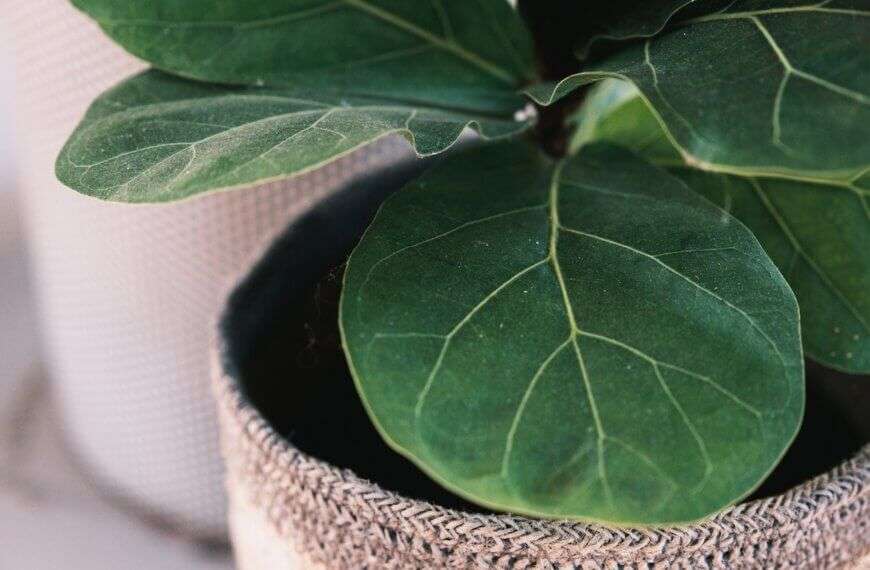Introduction to ZZ Plants
Are you a neglectful plant owner? The ZZ plant is perfect for you! Originating from Africa, it has glossy leaves and can withstand all sorts of neglect. It also purifies the air, removing toxins like benzene and formaldehyde.
To care for it: give it moderate light and only water when the top inch of soil is dry. Use well-draining soil and don’t let it sit in water. During the growing season, fertilize occasionally, but it can go long periods without it.
Surprisingly, ZZ plants were thought to be extinct until 1996, when they were found in a botanical garden in the Netherlands. Behold the ZZ plant – it won’t judge you for forgetting to water it!
Understanding the ZZ Plant
To understand the ZZ plant, you need to know its physical characteristics and origins. In order to care for it properly, these details are crucial. That’s why we’ll be delving into the physical characteristics and origins of ZZ Plants in this section.
Physical characteristics of ZZ Plants
The ZZ Plant has unique features! Glossy, dark green leaves are thick and waxy. This helps the plant store water. The stems grow in a zigzag pattern, giving it its name. It can survive drought and low light, making it perfect for indoors.
ZZ Plants also have an amazing air-cleansing ability. They can remove toxins such as benzene, formaldehyde and xylene. But remember, they’re poisonous to humans and animals – so keep them away from kids and pets!
An incredible thing happened with one ZZ Plant. It was neglected for months in a dry corner. Yet, it kept growing tall and healthy – showing how adaptable and low maintenance it is.
Its origin isn’t a secret like the Kardashians – it’s from Eastern Africa!
Origins of the ZZ Plant
The ZZ Plant has an intriguing past. It is named after its scientific name Zamioculcas zamiifolia. This extraordinary and adaptable plant first came to the US in the late 90s, but only gained fame in the early 2000s.
It comes from regions with dry climates and rocky soils. Its waxy leaves hold moisture, and it can survive in low light and with scarce watering. This plant grows slowly, making it a great, low-maintenance houseplant.
Today, people admire the ZZ Plant for its strong and permanent foliage. Its ability to thrive in neglect makes it a favorite of busy people with no green thumbs. It stands as a symbol of resilience and brings life to our homes.
Pro Tip: Beware of putting your ZZ Plant around pets, as its leaves may be toxic if ingested. To keep it alive, just ignore it – like your ex ignored your texts.
Caring for a ZZ Plant
To care for a ZZ plant with its multiple requirements, you need to know about the light, watering, soil, fertilization, temperature, repotting, and common pests and diseases. This section will help you understand the different sub-sections that will provide you with the solutions to care for your ZZ plant in a better way.
Light Requirements
Knowledge of your ZZ plant’s light needs is key to giving it the optimal living conditions. See the table below for details.
| Lighting | Description |
|---|---|
| Bright Indirect Light | Best for ZZ plants. Keep them 5-8 feet away from an east or west-facing window. |
| Direct Sunlight | Avoid. Causes sunscald, turning the glossy foliage yellow or brown. |
| Low Light | ZZ plants can tolerate low light, but prolonged exposure will weaken growth eventually. |
ZZ plants can adapt to various light levels. But, sudden changes could damage or cause leaf loss. Move carefully.
For best results, give your ZZ plants 6-8 hours of bright indirect sunlight daily. Otherwise, foliage may become leggy and pale over time.
Watering ZZ plants is a balancing act. Too much water is a soggy mess, and too little is a desert.
Watering Requirements
Maintaining Moisture Levels
For a healthy and long-lasting ZZ plant, proper moisture levels must be maintained. Overwatering can lead to root rot and other fungal diseases. On the other hand, underwatering causes leaves to wilt and turn yellow.
Check the top inch of soil for dryness before watering thoroughly. Generally, water your ZZ plant every two to three weeks during spring and summer, and less in fall and winter.
ZZ plants store moisture in their rhizomes, allowing them to survive periods of drought. This makes them great for indoors, but be careful not to overwater or pay too much attention.
To avoid overwatering, use a well-draining potting mix and a container with drainage holes. Water only when needed – when the top inch of soil is dry. Make sure the soil is completely dried out between waterings.
By following these tips, you can keep your ZZ plant healthy and thriving. Plus, it’s low-maintenance – perfect for busy indoor gardeners. Even ZZ plants deserve good soil – unlike some people, I guess!
Soil Requirements
Ensuring the Perfect Soil Quality for ZZ Growth!
Mix equal parts sand, peat moss and soil to give your plant the nutrients it needs for growth. Avoid adding rich compost or organic materials – just use organic-certified products. Make sure your pot has enough space for water to drain. Put a generous layer of peat moss at the bottom too. Trim yellow leaves and roots to encourage new growth. Feed your plant with the right amount of fertilizer – not too much, not too little.
Fertilizing Requirements
For lush and healthy growth of your ZZ plant, nourish it through its roots. Use all-purpose liquid fertilizer or balanced granular fertilizer (10-10-10). Fertilize once a month during the active growing season (spring and summer) using a quarter-strength solution or follow package instructions for granular fertilizer.
Be careful not to over-fertilize as it can cause salt injury or root burn. Let the top inch of soil dry before fertilizing. Remember, ZZ plants grow slowly, so avoid feeding them during their dormant period (fall and winter). Set reminders in your calendar or phone app to ensure you don’t miss a fertilizing cycle.
With proper care, your ZZ plant will thrive. Just like Goldilocks, it prefers the temperature to be not too hot, not too cold, but just right. My friend once neglected her ZZ plant’s fertilizing needs for months. The leaves turned yellow, drooped, and eventually fell off. This was a reminder that ZZ plants need proper nutrition to stay vibrant and healthy.
Temperature Requirements
It is essential to comprehend ZZ plants’ temperature requirements for optimal growth. Ideal temperatures range from 60°F to 75°F (15°C to 24°C). Temperatures outside this range can hurt their growth. To help, we’ve created a table:
| Temperature Requirements | Information |
|---|---|
| Ideal Range | 60°F to 75°F (15°C to 24°C) |
| Min Temperature | 45°F (7°C) |
| Max Temperature | 90°F (32°C) |
Occasional exposure to colder temperatures is OK, but long-term exposure is dangerous. Also, sudden temperature changes are damaging – keep them away from heaters and radiators.
Pro Tip: Consistent temperatures through the year help the ZZ plant thrive and stay stress-free. Repotting a ZZ plant is like giving it a new home!
Repotting a ZZ Plant
When it comes to looking after a ZZ plant, you might need to repot it for its health. Follow these 4 simple steps:
- Choose a pot one size bigger than the current one.
- Fill it with well-draining soil, leaving room for the plant.
- Gently remove the ZZ plant from its pot and loosen the roots.
- Put the plant in the new pot, secure it in the soil and water.
Remember to only repot your ZZ plant once a year. If you notice yellowed leaves or slow growth after repotting, don’t worry – it’s normal and it’ll recover.
Fun fact: ZZ plants can purify the air of nasties like benzene and xylene. NASA’s Clean Air Study found them to be one of the top air-cleaning plants.
If your ZZ plant isn’t doing well, it could be because of mealybugs or spider mites.
Common Pests and Diseases of ZZ Plants
Maintain optimal health of your ZZ plant by preventing various pests and diseases. Allow soil to dry before watering, use a well-draining potting mix and maintain high humidity levels.
Mealybugs can be removed by rubbing alcohol and cotton swab. Insecticide soap removes scale insects and their sticky substance. Leaf Spot Disease is caused by excess moisture and appears as brown spots. Avoid overhead watering and remove affected leaves.
Monitor the plant for early signs of infestation or disease. Don’t overwater, as it leads to stress and vulnerability.
Did you know? ZZ Plants were discovered in 1829 in Tanzania by Peter René Oscar Bally. Growing a ZZ plant is like having a pet rock with less responsibility!
Propagating ZZ Plants
To propagate your ZZ plant successfully, you need to learn some crucial techniques. Dividing the plant, stem cuttings, and leaf cuttings are the solutions you need to propagate your ZZ plant with ease. Let’s dive into these sub-sections and explore the best practices for propagating your ZZ plant.
Dividing the plant
Propagating ZZ plants? Separating the rhizomes into smaller pieces is an option. Here are 6 steps to do it:
- Take the plant out of its pot.
- Loosen soil around the roots.
- Look for healthy rhizomes with at least one stem and a few roots.
- Cut or twist apart each rhizome with a sharp, sterile knife or scissors.
- Cleanly trim any damaged or discolored areas.
- Repot them in fresh soil and water.
ZZ plants are slow-growing. They originated from Eastern Africa’s Zanzibar island. Botanists heard of them in 1829, and they were brought to England for research.
Cutting stems may sound bad, but it’s actually good for growth.
Stem cuttings
Propagation of ZZ Plants with Stems!
Choose a healthy mother plant with long stems. Sterilize your pruning tool with alcohol. Cut off a piece of the stem with at least two nodes and keep the topmost ones. Dip the bottom into rooting hormone. Put the cutting 2-3 inches deep in soil or water. Keep the medium moist.
ZZ plants are slow-growing, so patience is key! They may experience shock when moved to new environments. Reduce their stress with sunlight, nutrients and moisture.
My experience shows they are resilient and can thrive under suboptimal conditions, if given enough time and care. Botanical cloning without the moral quandaries – that’s propagating ZZ plants with stems!
Leaf cuttings
Propagating ZZ plants through leaf cuttings is a popular and successful way of doing so. To start, pick healthy leaves with stems still attached. Put the stem in water or soil with good drainage. Sunlight can damage the leaves, so ensure it’s in indirect light. Keep moisture levels moderate.
Remember, ZZ plants grow slowly, so it may take months for the new plant to mature. But, if you take proper care of it, your new plant will be a gorgeous addition to any home!
By propagating, you’ll get to experience the process of creating a new plant from scratch. You can even make plants as gifts for friends who enjoy indoor gardening. I did this for my colleagues at work and they were delighted by the vivid green foliage of the ZZ plants.
Whether you’re a gardening pro or a novice, propagating ZZ plants is a great way to add life to your home. Just don’t try it with your housemates!
Conclusion
You now have all the info you need to look after your ZZ Plant. With proper knowledge of watering, light, soil and pest control, you can keep it in tip-top shape with minimal effort.
- Water when the soil is dry.
- Place it in a low-medium light area.
- Use well-draining soil.
- And don’t over-fertilize.
Keep an eye out for pests like spider mites and aphids.
Don’t forget: you need to put in some time to look after your ZZ Plant. Then you’ll be able to enjoy its evergreen beauty and air-purifying benefits! So start caring for your lovely plant today!
Frequently Asked Questions
Q: How often do I need to water my ZZ plant?
A: ZZ plants are drought-resistant and can survive long periods without water. It’s best to let the soil dry out completely between waterings, which usually means watering once a month.
Q: How much light does a ZZ plant need?
A: ZZ plants thrive in low to medium light, making them perfect for indoor spaces. However, they can also tolerate bright, indirect sunlight.
Q: Can ZZ plants grow in any type of soil?
A: ZZ plants do best in well-draining potting soil with a mix of peat moss and perlite. Avoid heavy garden soil, which can cause the roots to rot.
Q: Do ZZ plants need fertilizer?
A: ZZ plants don’t require much fertilizer, but you can give them a small amount of balanced liquid fertilizer once or twice a year during the growing season.
Q: Can ZZ plants be propagated?
A: Yes, ZZ plants can be propagated by dividing the rhizomes, or underground stems, in the spring. Ensure that each division has at least one healthy rhizome and some leaves.
Q: Are ZZ plants safe for pets?
A: ZZ plants are toxic to pets and can cause digestive problems if ingested. Keep them out of reach of cats, dogs, and other pets.




